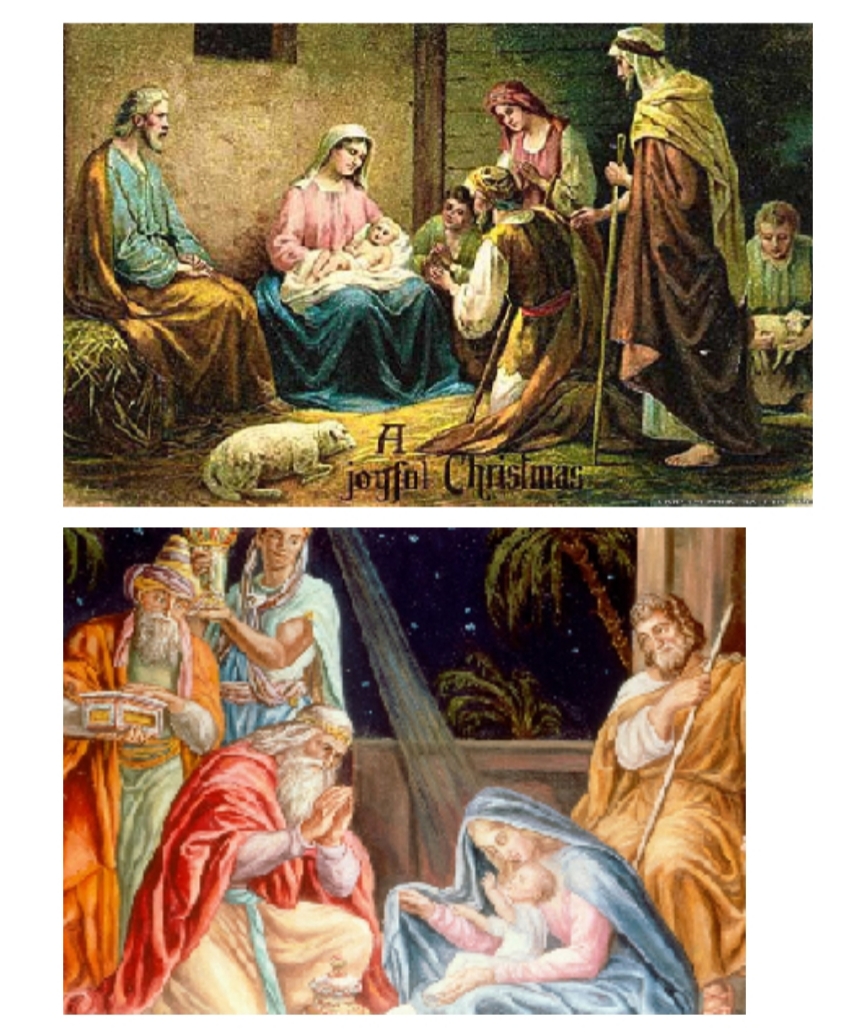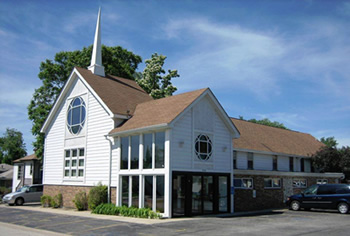There are many wonderful and inspiring aspects from the two accounts of the birth of Jesus recorded in the gospels of Matthew and Luke, which you probably have your favorite. But in spite of the inspirational facts relating to this event, there is an important question we need to ask ourselves, what are many spiritual principles that the events leading up to Jesus’ birth and happened shortly after, that teaches us that we can apply to our lives today?
Many of these Biblical accounts are replicated on Christmas paintings, Christmas cards, nativity scenes and decorations. Below are two examples. Because of your familiarity of the Biblical account, you probably can easily state what event from scripture each picture is depicting.

Please read Matthew 1:18-2:18 and Luke 2:1-5 and compare this chronological list of the key events which combines Matthew’s and Luke’s account of Jesus’ birth and the events that happened shortly after.
The Birth of Jesus Foretold – Luke 1:26-56,
Mary’s surprise, confusion and praise in anticipation.
The Birth of Jesus Christ- Matthew 1:18-24,
Joseph’s painful disappointment and expectant obedience.
The Birth of Jesus – Luke 2:1-20,
Joseph’s and Mary’s journey, unanticipated inconvenience and joy.
The Shepherds and Angels – Luke 1:8-20,
Mary treasures and ponders the Shepherd’s words.
Jesus Presented in the Temple – Luke 2:21-38,
Joseph and Mary marvels at the words of Simon.
Visit of the Magi – Matthew 2:1-12,
Jesus is worshiped and receives valuable gifts.
Escape to Egypt – Matthew 2:13-18,
The family escapes and the tragic slaughter of the innocent.
As you can see by combining the two gospel accounts, we derive more of a complete picture of this event.
Among the many forms available of how these events are illustrated, one of the most popular is the nativity scene which depicts centuries of tradition which is not Biblically accurate. This does not mean we should dispose of our nativity scenes and condemn those who display them.
Concerning the traditional nativity scene, when you read Matthew’s and Luke’s account, did you notice that neither of the two accounts stated how many Magi or wise men there were, nor does scripture give us their names as some believe. Identifying the Magi as Balthasar of Arabia, Melchior of Persia, and Gaspar of India is an Armenian tradition. It is assumed “that there were three wise men because of the three gifts that were given: gold, incense, and myrrh (Matthew 2:11). However, the Bible does not say there were only three wise men. There could have been many more.”
A common misconception is taught that the Magi visited baby Jesus at the stable where He was born. Matthew 2:11 (NIV) says the Magi visited and worshiped Jesus in a house, not at the stable. On coming to the house, they saw the child with his mother Mary, and they bowed down and worshiped him. Another aspect to this misconception is that the wise men visited Jesus at the stable on the night of His birth. The Biblical fact is that the Bible does not tell us exactly how long after Jesus’ birth they visited Him. It could have been days or many months and some Biblical scholars believe it could have been as long as two years after His birth.
But does it really matter if there were three or three dozen Magi or where they visited baby Jesus was in a house or someplace else? By knowing the correct Biblical answer might give some the important personal satisfaction to know that they pay careful attention to Biblical fact and their beliefs are not influenced by tradition. But it is also important to be mindful that there are many more spiritual principles we can learn and apply to our lives from the events surrounding the miracle of Jesus’ birth.
Where is the one who has been born king of the Jews? We saw his star in the east and have come to worship him.” Matthew 2:2 NIV.
1) The magi were men who read, believed and faithfully acted on God’s Word.
What made the Magi (plural of magus) or “wise men” travel to Jerusalem from some distant location in the east? How did they know about the significance and uniqueness of the particular star they saw from all the other stars seen in the eastern night sky? How did they know that particular star was pertaining to “the king of the Jews“? Just in the definition of Magi tells us they were educated. Some believe that the Magi were educated in astronomy, but it is clear they were also educated in Old Testament prophecy. Do we know and believe God’s word and act on it in faith?
On coming to the house, they saw the child with his mother Mary, and they bowed down and worshiped him. Then they opened their treasures and presented him with gifts of gold and of incense and of myrrh. Matthew 2:11 NIV
2) The magi were men who knew “Who” to worship and how to worship.
They sought out Jesus, when they found him, even though he was not living in a palace, they recognized him as “king of the Jews”. They humbled themselves “they bowed down and worshiped” to a baby and gave him their costly gifts. Are we willing to give of ourselves and diligently seek out Jesus to worship Him regularly?
And having been warned in a dream not to go back to Herod, they returned to their country by another route. Matthew 2:12 NIV
3) The magi were men who feared, trusted and obeyed God more than man.
They were truly wise men! Does our decisions display to others that we truly fear and love God?
How are we living our lives as wise women and men who exemplify these three-character traits in our relationship with God?
Pastor John


